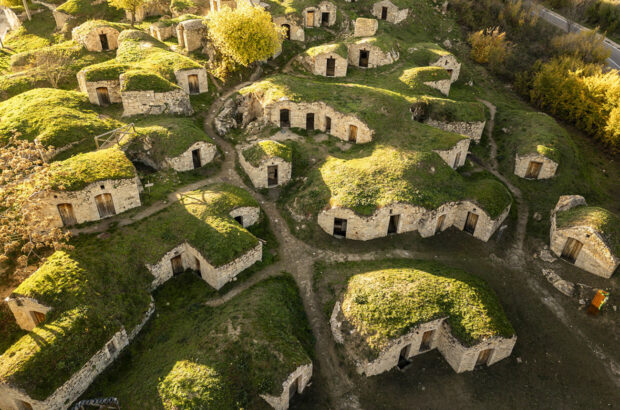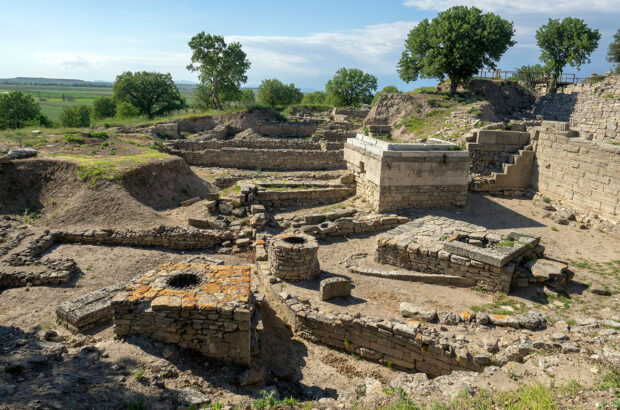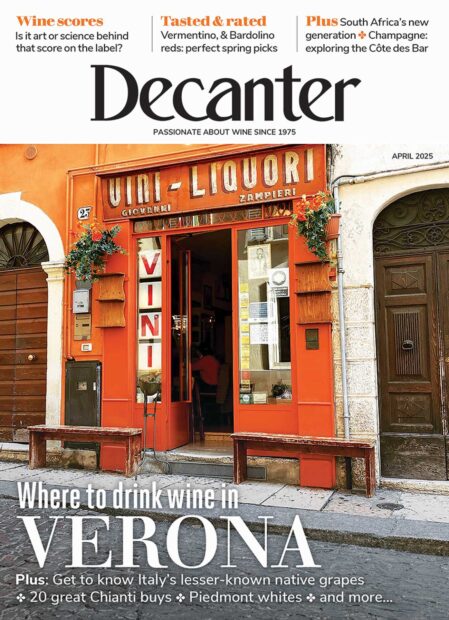When Grüner Veltliner took on white Burgundy in blind tastings last year, wine lovers everywhere took notice. DARREL JOSEPH looks at Austria’s other great white
In a world drenched in wines made from standard international grape varieties, it is all the more arresting when a niche variety grown in a fairly obscure wine country skyrockets to prominence. Or at least edges its way to glory. Such has been the case with Grüner Veltliner, the spicy, peppery, character-filled white grape of Austria.
Ever since the late 1980s, when a new generation of Austrian producers began
re-shaping the style and quality of their country’s winemaking, Austrian whites have captured the heart not only of Austrians, but of top restaurateurs, critics and connoisseurs around the world. And it’s Grüner Veltliner – Austria’s most widely planted grape variety – that has drawn the most oohs and aahs.
Sound exaggerated? Consider this: Over the last two years, blind tastings held around the world – London, Tokyo, Singapore and Vienna – have seen Austrian Grüner Veltliner lined up alongside some of the world’s top Chardonnays, including Burgundy. Each time, Grüners were lauded by the tasting panels, made up of wine professionals and writers. Consider further the results of the blind tasting in London, in October 2002. This was organised by fine wine dealer Jan-Erik Paulson of Germany, and was hosted by renowned wine writers Jancis Robinson MW and Tim Atkin MW. Entries included a 1990 Corton Charlemagne from Louis Latour and a 2000 Puligny Montrachet Clavoillons from Domaine Leflaive. The top wine? A 1990 Grüner (Vinothekfüllung Smaragd), from the Emmerich Knoll winery in Austria’s supreme white wine district, the Wachau.
Grüner Veltliner was paired with Chardonnay in the blind tasting because, as Paulson explains: ‘They both have a similar weightiness, and can go to high alcohol levels. Also, both are very good food wines. And, of course, Chardonnay is a hugely popular grape internationally. So, what better than to test the two side by side?’
Award winner Emmerich Knoll III, who, with his father, runs a 14ha (hectare) estate around the Wachau town of Unterloiben, adds: ‘What Grüner Veltliner can do is remarkable. For ageing, it matches great Chardonnay. Our Grüners can be aged for up to 20 or 30 years. And yet it can be powerful on its own, without oak ageing in barrel or malolactic fermentation.’
The Knoll family roots mean it has long known about the attributes of Grüner Veltliner. The Wachau is part of the province of Niederösterreich, or Lower Austria, where Grüner was first discovered in the 18th century and is still most at home. While the variety can also be found in south-east Austria (the Burgenland province), and in the Czech Republic and Hungary, it thrives best in many parts of Lower Austria. Here, the warm Pannonian breezes blowing over from Hungary meet up with the cool evening air drifting down from the northern forests to create the ideal conditions – warm days and cool nights.
Although only 1,400ha are planted in Wachau, many of the vines are found on dramatically beautiful, steep hillside terraces that straddle the Danube river some 80km west of Vienna. Knoll’s Ried, or Cru, Loibenberg, for example, is 350m in altitude on dry, warm soils of gneiss, loam and sand. Not only are the vines southerly exposed, but so are the stone walls securing the hillsides. With so much warmth, the grapes here are ripe and rich, creating full-bodied wines showing a spicy, citrus and almost tropical-style roundness and opulence.
On the other hand, Knoll´s Ried Schütt features primary rock soils with some sand, but is on flatter ground close to the bottom of the hills. With more exposure to cooler evening temperatures blowing through the valley, the Grüner Veltliner wines made from this site are more aromatic, yet austere and streamlined, remaining closed for a while until they slowly open up their mineral and peach personality.
The Vinothekfüllung Smaragd that took top honours in London is a blend of the best grapes from Knoll’s Loibenberg and Kreutles vineyards(including some botrytised grapes).
‘We think botrytis can be good for Grüner Veltliner wines made at the smaragd level,’ says Emmy Knoll. ‘Even up to 30% of grapes used can have botrytis. These give the wine a wonderful smoke and tobacco character.’
Smaragd is the highest level in a three-tiered quality classification system for the Wachau’s dry whites. Smaragd indicates ripe, robust, full-bodied wines with a minimum alcohol level of 13%, reaching as high as 15%. The other levels are federspiel, medium-bodied with finesse; and steinfeder, the light, easy-drinking quality wines with a lower alcohol level, usually 10% or 11%.
Top Names
Other top Wachau producers making smaragd Grüners worth seeking out include FX Pichler, Franz Hirtzberger, Prager, Josef Jamek and the excellent Freie Weingärtner Wachau cooperative.
It doesn’t start and end in the Wachau. Lower Austria has other wine districts featuring talented producers who are revealing many interpretations of Grüner Veltliner.
Kremstal and Kamptal, which border the Wachau, are home to Grüner stars such as Willi Bründlmayer, Fred Loimer, Saloman (Undhof), Josef Hirsch, Martin Nigl, the Jurtschitch brothers (Sonnhof) and Schloss Gobelsburg. While there are many similarities to the Wachau in terms of climate and terroir, the winemakers here emphasise the wines’ subtle differences to create their own signature wines.
Willi Bründlmayer, from Langenlois in the Kamptal, whose Ried Lamm 1997 came second at the London blind tasting, plays on nuances such as the chalky elements in the stony Lamm soils that help bring out the exotic mineral and fruit expressions; or the cinnamon notes that can be extracted from his Käferberg vineyard grapes. From his 50-year-old vines, Bründlmayer produces full, concentrated Alte Reben, or ‘Old Vines’ Grüners.
Michael Moosbrugger, from the Schloss Gobelsburg estate in the Kamptal, produces his Ried Grub Grüner from loess-rich soils laden with calcium deposits formed 25,000 years ago. They lend, he claims, a ‘dark, strong mineral and spice character’ to the wines.
Each winemaker has his own ageing techniques and style. Bründlmayer, for example, likes to experiment with acacia wood barrels (‘acacia is more neutral than oak’), while Moosbrugger uses large oak casks, but of wood only from the nearby Manhartsberg forest (‘This oak is from the same environment in which the grapes are growing – giving a very special harmony and specific oak character’).
Transformation
Austria’s largest wine region, the Weinviertel (literally, ‘wine quarter’), with 16,000ha under vine, produces vast amounts of Grüner Veltliner, but has never had many top-quality producers. For decades, this highly arid district with low-lying hills cranked out simple, sour-ish mass-production wines with bracing acidity. But this is being remedied by a new breed of producers such as Roman Pfaffl who, at his 41ha estate in Stetten, 15km north of Vienna, focuses on lighter-bodied quality Grüners. He is managing to craft exceptional weighty versions of the wine as well.
One of his specialities is his single-vineyard Goldjoch wine. For the 2002 version, half has been aged for seven months in large oak casks and the other half in new barriques. Pfaffl believes subtle, tempered use of barrique fits well to Grüner,
giving roundness and more structure to the wine. He has been trying to produce some of his lighter-bodied wines under Austria’s first appellation, ‘Weinviertel DAC’ (Districtus Austria Controllatus), which was phased in last year.
The DAC system, designed for all of Austria’s wine districts as a quality instrument to help clarify the country’s wine image, emphasises on labels the wine-growing area more prominently than the grape variety. This is an ideal concept for a district such as the Weinviertel, which has never enjoyed a significant reputation. So far, however, the Weinviertel is the only wine region to adopt the system.
In Pfaffl’s ‘Weinviertel DAC’ wines, he follows the rigorous quality standards set: a minimum of 12% alcohol, no wood flavour detectable on the palate, and typicity of the grape variety designated for the classification – which is, in the case of the Weinviertel, none other than Grüner Veltliner. The variety should reflect a clean, crisp, peppery-spice character.
‘The DAC concept advertises the Weinviertel,’ says Pfaffl. ‘It shows that good quality wine is being made here. And it has been extremely successful. The Weinviertel winemakers with DAC classification have sold 2.5 million bottles in the first year, against original estimates of around one million.’
Not all winemakers are so sure that adopting the DAC system for their districts would be the right move, however. Says Markus Huber, a 24-year-old wunderkind producer in the Traisental, a tiny district with only 700ha of vineyards and where Grüner Veltliner is the most widely planted grape: ‘The DAC is a good concept for large wine regions, but our region (the Traisental) could be too small. In any case, I think the winemaker’s name speaks for itself.’
Huber is crafting a range of beautiful Grüner Veltliner wines, from his lighter apricot- and-banana-toned Obere Steigen, to his complex and weightier Alte Setzen, from 40-year-old vines. His single-vineyard Berg, is a deep, full, mineral-rich masterpiece that he sells at his winery (the 2002 vintage) for t13 (£8.50). It represents outstanding value for money.
Another Grüner magician in a lesser-known district is 32-year-old Berhard Ott, from the Donauland. He produces a series of five Grüner Veltliners – all steel fermented and aged, but with varying degrees of body, weight and personality. ‘For me, Grüner Veltliner from my area of the Donauland, the Wagram, means “strength and elegance”,’ he says.
This much is evident in his wines, from the lightest, Am Berg, to the deep and beautifully balanced Rosenberg Reserve, made from very ripe grapes harvested in mid-November and boasting 13.5% alcohol. A wine to give even the Grüner Veltliner Smaragd wines from the Wachau a run for their money.
https://www.decanter.com/wine-travel/the-best-wine-festivals-2020-429485/







